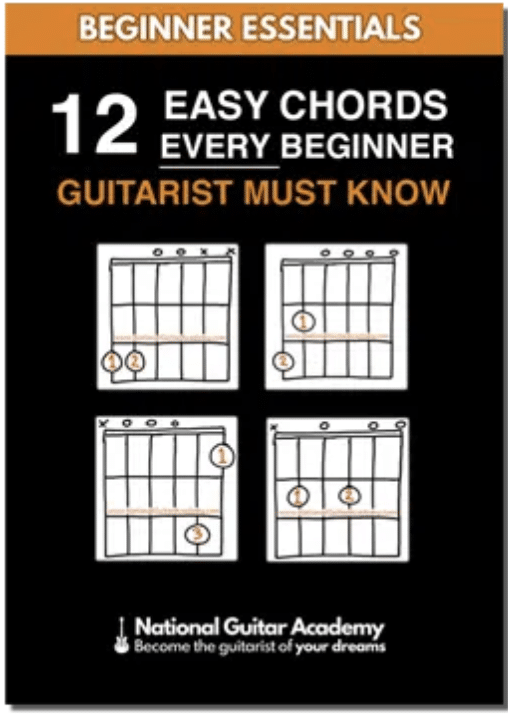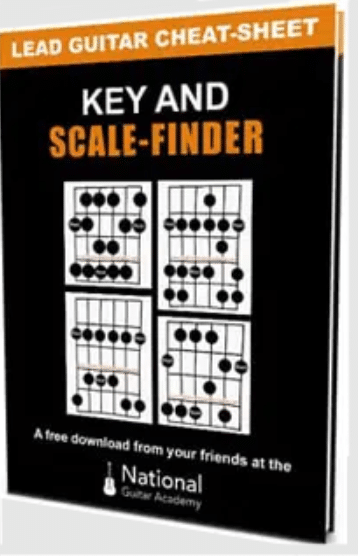We’re going to share a tip that us saved us hours of frustration. It’s a simple pattern that unlocks the fretboard. You’ll be able to identify any note on the guarantee instantly.
Are you struggling to learn the notes on the fretboard? Let me share with you a tip that saved me so many hours of frustration when I learned it and it will work for you too. Okay this is super cool, you’re gonna like this. These two notes will always sound the same.
So I’m gonna play here, I’m gonna go down two strings and along two strings. Can you hear how that’s a G note and that’s a G note. If I play them together they harmonize perfectly because they’re the same note they’re just an octave apart.
But the cool thing is this works all the way up the fretboard yeah two A notes, two Bs, two Cs, two Ds and so on. This is a really cool way of identifying notes around the neck. What’s also cool is that it works on the strings below.
So if I play here that’s a C note. If I go down two strings and along two frets that is also a C note. So C is here and here.
Play them together they harmonize, they’re both Cs, they’re just an octave apart. So if somebody says like what’s this note here, you may not know what note that is. But if you go down two and up two then there’s a much better chance you will know this note here which is a D. Remember as a guitarist you don’t need to learn all of the notes on the fretboard, you really don’t, but you do need to learn all of the notes on the sixth string and on the fifth string.
Because that’s how you play bar chords man, you’ve got to know them. If you do know the notes on the sixth string and the fifth string then you can use that springboard shape I just showed you to work out all of the notes on the third and the fourth string. Very cool yeah we’ve just erased the need to learn two whole strings on the guitar, very cool.
Okay now for the first string, the notes of the first string are just the same as the sixth string because both strings are tuned to E. So this is G, this is G, yeah G, A, B, C and so on. Those notes will always be the same because both strings are tuned to E. So we now know that if we know the notes on the sixth string and the fifth string we can easily, like literally in as long as it takes you to do that with your fingers, you can work out the notes on the third string, the fourth string and the notes on the first string because they’re always the same as the sixth string. You see how this is layering up? Okay the only one that’s left is the B string which is a bit more tricky.
So on the B string we come down two and along three. So let’s say you wanted to know what this note was here. Yeah someone put you on the spot and they’re like what’s that note there? You don’t know.
Then you come down three, one two three and then up two and we can see that note there. If you want to you can keep that springboard shape going and go down two and up two and say it’s F sharp. Down two, along two, down two and along three because we’re on the B string.
Yeah so it’s a bit more fiddly for that string. You know it’d be nice if the pattern worked on all of the strings wouldn’t it? But the one that I actually use to work out the notes on the B string faster than that, I don’t like going along three. It just feels a bit weird to me.
If I’m on the spot or I’ve sort of lost my bearings on the fretboard, you know which happens to everybody sometimes, then I just apply a C shape. So if you play a C chord this note here and this note here are always the same. So those two notes, I’ll try and move that finger out of the way.
See that? This one and this one, they’re always the same. So you can use that anywhere on the fretboard to figure it out. So if someone says what’s that note there and you’re like I don’t know, then you can just play a C shape there.
Hear how those notes harmonize? They’re two octaves apart. But if we know our notes on this string then we can say that that is an F sharp. C, D, B, F, F sharp.
Okay so I’ve just shown you, it’s actually only two shapes isn’t it? It works on all of the strings. Two shapes that you need to know. Two strings down, two frets along will give you tell you what those notes are.
You can use that on the first, second, third and fourth strings. And for the fifth string you just use that C shape. I threw a lot at you there but hopefully it wasn’t too complicated.
Hopefully it came through okay in the video. Play around with this, it’s a super cool way to quickly figure out where you are on the neck and it saves so much time you wouldn’t believe it.



